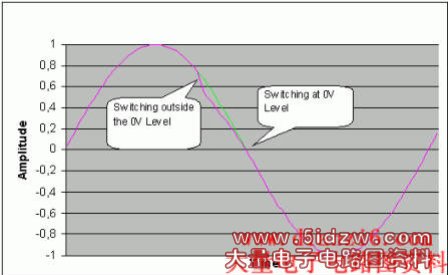Digital Potentiometers Replace Mechanical Potentiometers
Abstract: Digitally adjustable potentiometers, also known as digital potentiometers, or digpots, are replacing the old-fashioned mechanical versions in all electronic systems, not just in the more well-known audio applications. A simpler and less expensive version of the digital-to-analog converter (DAC), digital pots produce an analog output in the form of a variable resistance. Available in volatile and nonvolatile types, the digital approach has many advantages. Digital pots are insensitive to dust, dirt, and moisture, which can kill a mechanical part if they intrude.
Introduction
Digital potentiometers are far more reliable than mechanical potentiometers. Digital pots can easily guarantee 50,000 writing cycles, while the mechanical parts rate only a few thousand, and sometimes only a few hundred. Digital pot resolution can range from 32 steps (5-bit) to 256 steps (8-bit), and more. Low resolution is acceptable for LCD-display contrast and other applications in which dynamic range is not critical. Recent high-resolution digital pots are ideal for achieving the typical dynamic range up to 90dB for some audio and hi-fi applications.
Nonvolatility
For certain applications, the digital pot requires a nonvolatile memory function. Both part types (volatile and nonvolatile memory) are well established in the market. A nonvolatile digital pot is most similar to its mechanical counterpart because it retains the resistance value, regardless of external conditions such as whether or not the supply voltage is present.
Digital pots with nonvolatile memory are widely used in audio equipment because the internal stored value guarantees the same resistor settings always after power up, even if the power supply was completely switched off.
The MAX5427/MAX5428/MAX5429 family of digital pots offers a unique programming feature. Each device has a one-time programmable (OTP) function that sets the wiper's power-on reset (POR) position to a user-defined value. (The wiper position remains adjustable, but always returns to the programmed position on power-up.) As an alternative, the OTP capability lets you disable the interface and permanently lock the wiper in a desired position, thereby preventing further adjustment. As a result, the device becomes a fixed resistive divider instead of a potentiometer.
Audio Considerations
Electronic pots offer logarithmic and linear functions. Logarithmic potentiometers are often used to adjust volume in hi-fi audio, because each step of a logarithmic pot creates a linear change of volume for the nonlinear human ear. Today's highly integrated digital pots offer as many as six independent potentiometers in a single chip. Consequently, these pots also support the many audio applications that require multiple channels, such as stereo and Dolby-surround systems.
For audio, and especially for low-attenuation (32-step) digital pots, one must pay special attention to the step-by-step wiper transitions. If a wiper does not switch exactly at 0V, the audio can include annoying clicks and pops (Figure 1). Fortunately, certain recent-generation digital pots include a feature called zero-crossing detection, which reduces the audible noise generated during wiper transitions. An internal zero-crossing and timeout circuit ensures that the wiper changes position only after detection of a zero crossing (0V) or a 50ms delay, whichever comes first.
Figure 1. Effect of Switching at the 0V Level on Audible Clicks and Pops.
In addition to the analog-domain considerations mentioned above, each digital pot has a digital interface. Most are programmable through a conventional serial interface like I²C or SPI™, and some offer the useful up/down interface.
Better Performance
Digital pots have yet another performance advantage over mechanical potentiometers. Digitally adjustable pots can now be mounted on the circuit board directly in the signal path, thereby eliminating the need for complex and expensive mechanical integration with the electronic controls. Digital pots improve the rejection of electrical noise, and they eliminate the disturbances picked up by the cables required to interface a mechanical potentiometer.
Conventional digital potentiometers do not require extensive explanation, because they substitute directly for conventional mechanical pots and operate in a similar fashion. Nonetheless, an application-specific device, such as one designed for low-cost stereo volume control, warrants some comment. Application-specific devices, for audio, often operate over a wide voltage range to accommodate the wide range of audio signals. They are often log-taper devices, whereby the number of decibels of attenuation per step increases as the steps increase, which better reproduces the response of the human ear. Sometimes the device includes a mute function, which further attenuates the signal by a significant amount (e.g., 30dB).
Temperature Issues
One of the typical characteristics of digital potentiometers is the temperature coefficient (TC), specified over the rated temperature range. Two different TCs must be specified for most potentiometers. First, the absolute end-to-end TC is a large value indicating the absolute variation of resistance with temperature, and is calculated as:
ΔR = RUNCOMP × TC × ΔT/106
where:
RUNCOMP is the uncompensated resistance value,
TC is the temperature coefficient, and
ΔT is the temperature variation.
Thus, for example, a digital potentiometer with 20kΩ resistance and absolute TC of 35ppm would exhibit a variation of 35Ω (0.2%) over the 50°C temperature range. Also, the initial value of the 20kΩ end-to-end resistance could vary significantly; a range from 15kΩ to 25kΩ is possible. In that case, the resistance value of the 32 increments (steps) would range from 470Ω to 780Ω. This variation is, of course, much higher than the absolute TC deviation.
The second type of TC is a ratio-metric TC. Potentiometers are typically used as voltage dividers, especially in ratio-metric applications for which the absolute resistance value is far less critical than the absolute TC and the variation between steps. A ratio-metric TC of only 5ppm, for example, would allow a very stable configuration for adjustable gain over temperature.